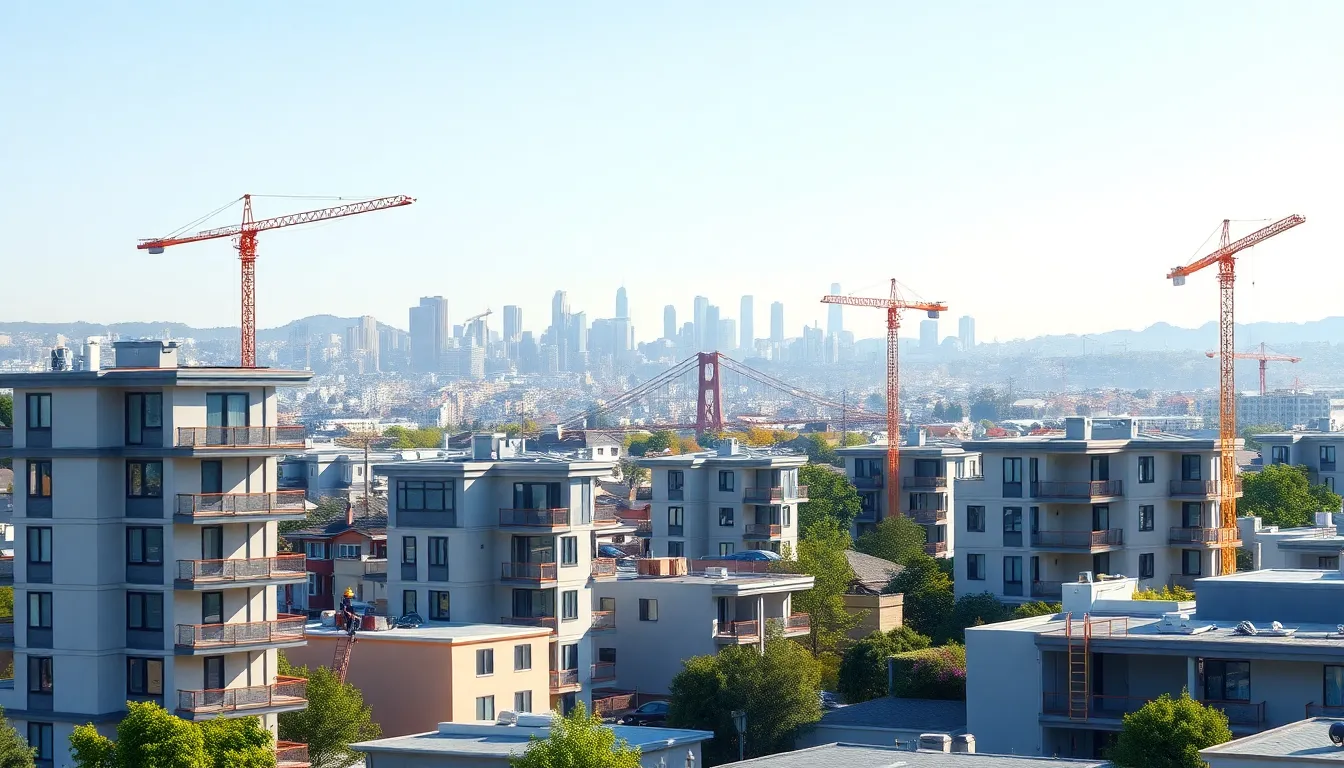In the ever-evolving world of Bay Area real estate, staying informed is as crucial as knowing the difference between avocado toast and regular toast. With prices soaring and trends shifting faster than a tech startup’s valuation, buyers and sellers alike need to keep their finger on the pulse. Who wouldn’t want to snag that dream home or sell at the peak of the market?
This vibrant region is a hotbed of activity, where every neighborhood has its own story and every listing could be the next big thing. Whether it’s the latest in housing trends or the quirks of local zoning laws, keeping up with Bay Area real estate news is essential for making savvy decisions. Get ready to dive into the latest updates, tips, and insights that’ll have you navigating this competitive market like a pro.
Current Market Trends
Bay Area real estate remains dynamic, with several key trends affecting home buying and selling.
Home Prices in the Bay Area
Home prices in the Bay Area continue to experience fluctuations. Recent data shows a median home price of $1.5 million, reflecting a year-over-year increase of 5%. Various factors, including job growth and interest rates, influence these price trends. Homes in prime neighborhoods, such as San Francisco and Palo Alto, often see even higher valuations. Investors and buyers alike must monitor these price movements closely to make informed decisions.
Inventory Levels and Demand
Inventory levels in the Bay Area remain low, contributing to heightened demand. Current statistics indicate only a three-month supply of homes on the market. Limited inventory drives competition among buyers, often resulting in bidding wars. Many buyers are drawn to newer developments and properties in established neighborhoods. In contrast, sellers gain leverage due to the scarcity of options, further intensifying the market.
Noteworthy Developments

The Bay Area real estate landscape continues to evolve with significant changes and emerging opportunities. Staying current on these developments ensures competitiveness in this dynamic market.
New Housing Projects
New housing projects are gaining traction across the Bay Area. Developments such as Mission Rock in San Francisco plan to include 1,500 residential units alongside commercial spaces. Additionally, Palo Alto’s proposed 800-unit project aims to enhance affordable housing options. These projects respond to the region’s pressing need for inventory. Developers are focusing on sustainable building practices, incorporating green technologies into their designs. Such innovations contribute to meeting environmental standards while attracting eco-conscious buyers.
Zoning Changes and Regulations
Zoning changes are reshaping the Bay Area’s real estate framework. San Francisco recently approved measures to increase housing density in certain neighborhoods. These regulations promote the development of multifamily homes in areas previously designated for single-family residences. Such changes align with state initiatives to tackle housing shortages and rising prices. Furthermore, cities like Oakland are adjusting zoning to encourage mixed-use developments. This flexibility supports local businesses and enhances community engagement, driving interest from both developers and potential residents.
Impact of Technology
Technology significantly alters the Bay Area real estate landscape. Innovations and trends shape how buyers and sellers engage in the market.
Influence of Tech Companies on Real Estate
Tech companies drive demand for housing in the Bay Area. Companies like Google and Facebook contribute to a robust job market, increasing the influx of employees seeking housing. In regions such as Mountain View and Menlo Park, housing prices reflect this surge. Developers respond with new projects to accommodate this growth, elevating competition among buyers. Community amenities also improve as tech firms invest in local infrastructure. These factors solidify the relationship between the tech industry and real estate dynamics.
Remote Work Trends and Their Effects
Remote work trends reshape buyer preferences in the Bay Area. Many individuals now seek homes with dedicated office spaces, shifting the market’s priorities. Suburban areas grow in popularity, offering more space and affordability. Houses in places like Walnut Creek and San Rafael see increased interest as distance from the office becomes less critical. This shift allows buyers to explore neighborhoods outside urban centers while still enjoying the benefits of the Bay Area. Ultimately, remote work influences purchasing decisions and fosters new real estate opportunities.
Neighborhood Spotlights
Neighborhood dynamics in the Bay Area shift rapidly, and recognizing emerging trends is essential for navigating the real estate landscape. Certain areas are gaining attention due to development and affordability following tech growth.
Upcoming Areas to Watch
Concord showcases promise with new transit options enhancing access to job centers. Monthly price increases reflect the interest, attracting buyers seeking affordability. Similarly, Richmond benefits from new housing developments that appeal to first-time buyers. Commutes to San Francisco and Berkeley attract families looking for spacious living arrangements. Furthermore, Alameda’s maritime charm and growing dining scene capture the attention of potential homeowners, making it a desirable area for those preferring a relaxed lifestyle.
Historic Neighborhood Changes
San Francisco’s Haight-Ashbury now blends its historic roots with modern trends, attracting a diverse group of residents. Medium-range prices reflect an appeal among young professionals and families. Oakland’s Uptown area reinvents itself through revitalization projects, contributing to a thriving arts scene and commercial developments that attract new businesses. Long-time residents appreciate the enhancements while newcomers find a strong community vibe. Additionally, South San Francisco’s industrial charm transforms as developers convert warehouses into loft-style living spaces, appealing to urban dwellers seeking unique character.
Staying informed about the Bay Area real estate market is crucial for anyone looking to buy or sell a home. With fluctuating prices and evolving trends it’s essential to adapt quickly. The ongoing developments and zoning changes are reshaping neighborhoods and creating new opportunities.
As technology continues to influence housing demand and buyer preferences shift towards suburban areas, understanding these dynamics will help navigate the competitive landscape. Whether it’s leveraging low inventory or exploring emerging neighborhoods, knowledge is the key to success in this vibrant market. Keeping an eye on local updates will empower readers to make informed decisions and seize opportunities as they arise.













